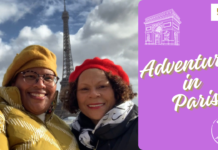
Several weeks ago, I wrote about an encounter with white supremacy when I announced to my white friend and her family that I was accepted into Penn State University and like a bad game of telephone, what they heard was that I had unfairly “taken” a spot presumably reserved for a deserving white acquaintance of theirs because–say it with me now: affirmative action. It would be so nice to say that I defended myself and walked off into the sunset never to have to deal with racism again…but we all know as a black person anywhere in this world, this dream has yet to materialize. In fact, my time at Penn State was its own case study of white supremacy and privilege in academia, so much so that the culmination of my undergraduate career was marred by racial intimidation and violence.Verysmartbrothas recently published an article suggesting helpful books for students preparing or returning to PWIs–predominantly white institutions–to “prepare them for the challenges that come along with the reality of life at a PWI as a student of color.” I would like to add my practical two cents to this endeavor as well because, for as many things that have changed in the 20 years since I set foot on campus as a freshman, too many things have stayed the same.
NOTE: Some of these suggestions may not extend to students at PWIs in major metropolitan cities and are more geared towards schools that are cities unto themselves in suburban/rural areas.
- Find out quickly where you can get your hair done or cut: Never trust chains like Supercuts who say they do “black” hair–it never ends well. If there are no black hair dressers or barbers in town or within a reasonable trip outside of town, there are usually fellow students who are gifted with follicle care and styling who can hold you down until you can manage a trip home to your regular stylist/barber.
- Do not go into the local towns alone: My friends and I would often joke that the names of two towns close to Penn State—Tyrone and Lamar–were named after black men that were lynched for being in the wrong place alone. Wikipedia refutes this, but it’s just safer to travel in groups to have protection and witnesses in case anything off-color happens. With the NAACP recently issuing a travel advisory for black visiting the entire state of Missouri, limiting or avoiding travel alone into small, lesser known towns just seems like common sense.
- Stock up on your shade of makeup when you’re at home: Granted, I am woefully out of touch with the makeup renaissance that is currently sweeping the world. I still don’t know what BB cream is and why you need it, so there’s a chance that these new houses of worship like Sephora and Ulta stock more encompassing range of makeup shades at most of their stores. But just in case, if you find yourself living in an area where you are in the minority, chances are they won’t have your shade in stock, so it’s best to stock up when at home.
- Prepare yourself for racism in ALL of its various forms: Since 2011, The Journal of Blacks in Higher Education has maintained a blog of alleged campus racial incidents and reports of discrimination, including the horrifying and senseless murder of a Bowie State University student on the campus of the University of Maryland in May. In addition to blatant, intentional and violent instances of racism, black students report feeling the most “drained” from repeated incidents of covert racism or micro aggressions, such as being excluded from study groups or being called on in class to be the “voice” of your race. In addition to the option of interrupting and confronting instances of prejudice, the next three suggestions can profoundly impact your ability to thrive in the face of racism.
- Cultivate a support group: Having a support group, either informal (friends) or formal (Black Student Union) will go along way in buffering the impact of racism. Informally, it’s great to have someone who you can vent to who understands or participating in group self-care like watching Black TV shows together. Formally, Black and POC groups are critical to the expansion of racial justice dialogue across campus among students, faculty, administration, and donors. Make sure to attend and support events on campus sponsored by POC students to increase visibility.
- Connect with a faculty/administrator of color for support: Professors of color are dealing with similar issues and micro aggressions related to racism, including “alienation and isolation, job satisfaction, competing demands associated with tenure and/or promotion, systemic oppression, institutional fit, and the history and legacies of injustice”. Despite this, their presence and support are crucial to black student retention and persistence through graduate education. My black thesis advisor was instrumental in supporting me to competitively persist and graduate from Penn State’s rigorous honors college. In addition to advisors and professors, diversity and inclusion program administrators are often great advocates.
- Take cultural studies courses: I feel like this is imperative and wish someone would have encouraged me to do the same. I did take one African studies class that just so happened to be taught by a white woman, which is not a rarity and to her credit, she spent many years studying and living on the continent. But that one class was not enough to begin to gain the essential knowledge of the African/African-American and global south diaspora that is often misleading at best and absent at worst from most secondary and undergraduate education. Shanna K Houser Contributor; [email protected]






































